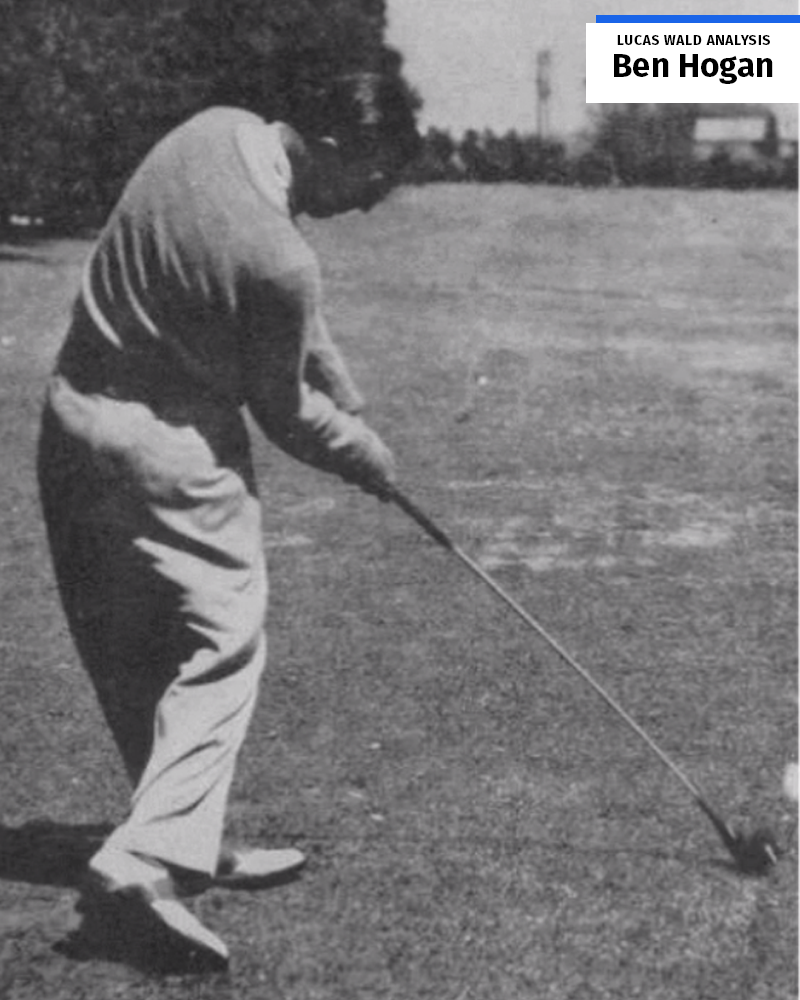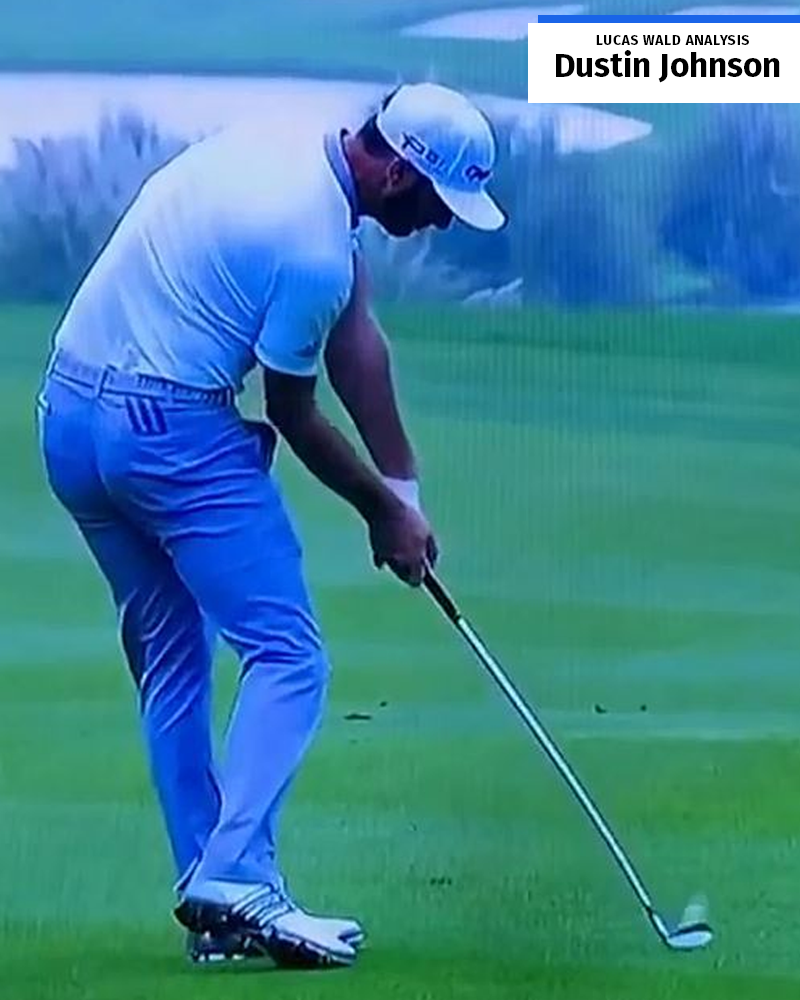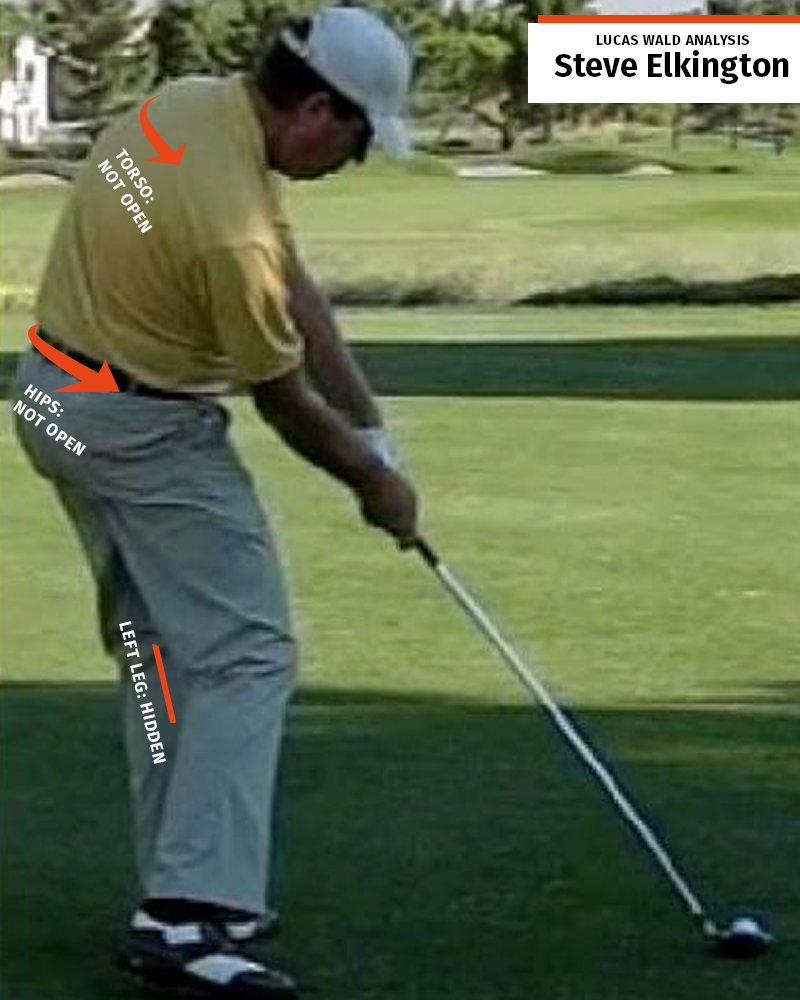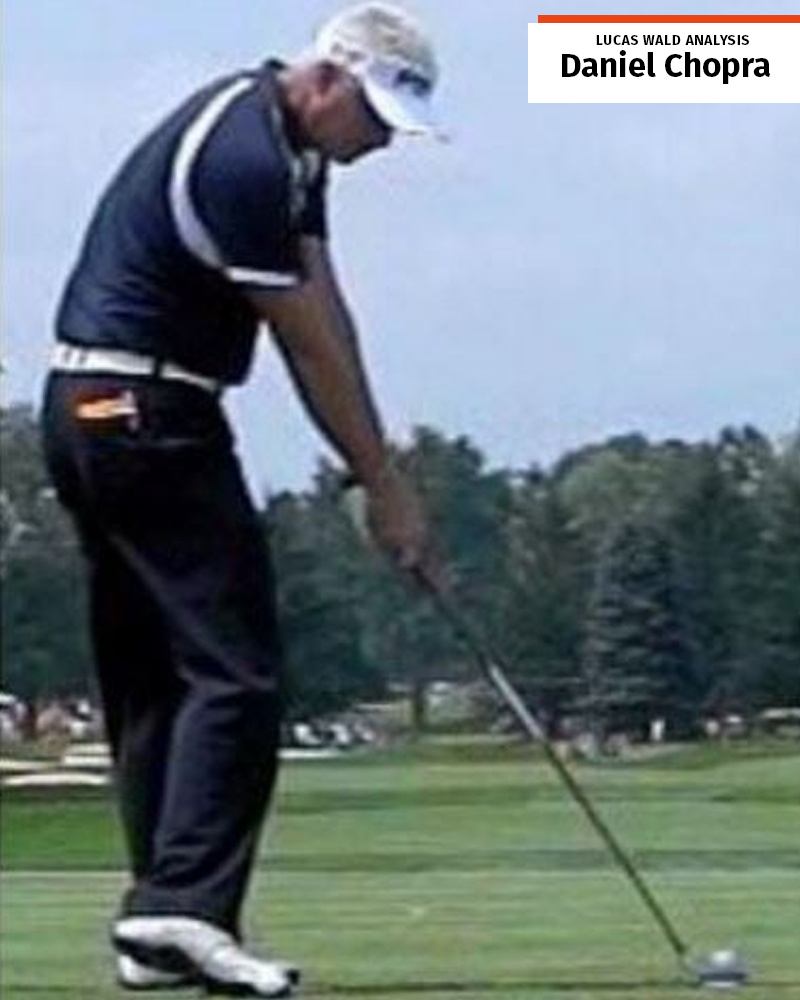Instruction
Learn from the Legends: Introduction

There is a better way to swing the golf club. I’d prefer to write that there is a correct way to swing the club, but I know that really freaks people out. People love to talk about how everyone’s swing is different. “There are lots of ways to get it done,” they say. “Look at Jim Furyk’s swing – it’s not what you’d teach, but it works for him.”
To some extent, they’re right. Elite swings do have different looks. Some take it back inside (Ray Floyd). Some cross the line (Tom Watson). Some swings are long (Bubba Watson). Some are short (young Tiger). But these differences are superficial and largely irrelevant. When it comes to the engine – the core of the swing – the greatest players throughout the history of the game are all very similar.
Don’t believe me? Well, let me prove it to you. In this series of articles, I will do my best to show you – with pictures and videos and data – that the legends all move a specific way. Focusing on these elements (while ignoring others) and practicing a certain way is the surest path to improving your golf swing and lowering your scores.
So, let’s get into it. There are a number of important elements that all the legends have, but the biggest and most important of these elements is rotation. Every great player throughout the history of the game has had elite rotation. It’s the most important thing they do, and it’s easy to see. When you’re looking down the line at all the great players at impact, you’ll see hips and torso open.
This is what the legends look like at impact:
And here’s what some very good players with less good rotation look like at impact:
Now, there are plenty of nuances to how great players rotate. They do it while keeping spine flexion, for example, and they do it with very little (or no) lateral movement toward the target (lateral movement impedes rotation). I will discuss these things in detail. My hope is that at the end of this series you will have a much better understanding of what separates the legends from the very good… and from the rest of us.
You will understand their “engine,” and hopefully this understanding will help you begin to create your own legendary swing!
Instruction
The Wedge Guy: Beating the yips into submission

There may be no more painful affliction in golf than the “yips” – those uncontrollable and maddening little nervous twitches that prevent you from making a decent stroke on short putts. If you’ve never had them, consider yourself very fortunate (or possibly just very young). But I can assure you that when your most treacherous and feared golf shot is not the 195 yard approach over water with a quartering headwind…not the extra tight fairway with water left and sand right…not the soft bunker shot to a downhill pin with water on the other side…No, when your most feared shot is the remaining 2- 4-foot putt after hitting a great approach, recovery or lag putt, it makes the game almost painful.
And I’ve been fighting the yips (again) for a while now. It’s a recurring nightmare that has haunted me most of my adult life. I even had the yips when I was in my 20s, but I’ve beat them into submission off and on most of my adult life. But just recently, that nasty virus came to life once again. My lag putting has been very good, but when I get over one of those “you should make this” length putts, the entire nervous system seems to go haywire. I make great practice strokes, and then the most pitiful short-stroke or jab at the ball you can imagine. Sheesh.
But I’m a traditionalist, and do not look toward the long putter, belly putter, cross-hand, claw or other variation as the solution. My approach is to beat those damn yips into submission some other way. Here’s what I’m doing that is working pretty well, and I offer it to all of you who might have a similar affliction on the greens.
When you are over a short putt, forget the practice strokes…you want your natural eye-hand coordination to be unhindered by mechanics. Address your putt and take a good look at the hole, and back to the putter to ensure good alignment. Lighten your right hand grip on the putter and make sure that only the fingertips are in contact with the grip, to prevent you from getting to tight.
Then, take a long, long look at the hole to fill your entire mind and senses with the target. When you bring your head/eyes back to the ball, try to make a smooth, immediate move right into your backstroke — not even a second pause — and then let your hands and putter track right back together right back to where you were looking — the HOLE! Seeing the putter make contact with the ball, preferably even the forward edge of the ball – the side near the hole.
For me, this is working, but I am asking all of you to chime in with your own “home remedies” for the most aggravating and senseless of all golf maladies. It never hurts to have more to fall back on!
Instruction
Looking for a good golf instructor? Use this checklist

Over the last couple of decades, golf has become much more science-based. We measure swing speed, smash factor, angle of attack, strokes gained, and many other metrics that can really help golfers improve. But I often wonder if the advancement of golf’s “hard” sciences comes at the expense of the “soft” sciences.
Take, for example, golf instruction. Good golf instruction requires understanding swing mechanics and ball flight. But let’s take that as a given for PGA instructors. The other factors that make an instructor effective can be evaluated by social science, rather than launch monitors.
If you are a recreational golfer looking for a golf instructor, here are my top three points to consider.
1. Cultural mindset
What is “cultural mindset? To social scientists, it means whether a culture of genius or a culture of learning exists. In a golf instruction context, that may mean whether the teacher communicates a message that golf ability is something innate (you either have it or you don’t), or whether golf ability is something that can be learned. You want the latter!
It may sound obvious to suggest that you find a golf instructor who thinks you can improve, but my research suggests that it isn’t a given. In a large sample study of golf instructors, I found that when it came to recreational golfers, there was a wide range of belief systems. Some instructors strongly believed recreational golfers could improve through lessons. while others strongly believed they could not. And those beliefs manifested in the instructor’s feedback given to a student and the culture created for players.
2. Coping and self-modeling can beat role-modeling
Swing analysis technology is often preloaded with swings of PGA and LPGA Tour players. The swings of elite players are intended to be used for comparative purposes with golfers taking lessons. What social science tells us is that for novice and non-expert golfers, comparing swings to tour professionals can have the opposite effect of that intended. If you fit into the novice or non-expert category of golfer, you will learn more and be more motivated to change if you see yourself making a ‘better’ swing (self-modeling) or seeing your swing compared to a similar other (a coping model). Stay away from instructors who want to compare your swing with that of a tour player.
3. Learning theory basics
It is not a sexy selling point, but learning is a process, and that process is incremental – particularly for recreational adult players. Social science helps us understand this element of golf instruction. A good instructor will take learning slowly. He or she will give you just about enough information that challenges you, but is still manageable. The artful instructor will take time to decide what that one or two learning points are before jumping in to make full-scale swing changes. If the instructor moves too fast, you will probably leave the lesson with an arm’s length of swing thoughts and not really know which to focus on.
As an instructor, I develop a priority list of changes I want to make in a player’s technique. We then patiently and gradually work through that list. Beware of instructors who give you more than you can chew.
So if you are in the market for golf instruction, I encourage you to look beyond the X’s and O’s to find the right match!
Instruction
What Lottie Woad’s stunning debut win teaches every golfer

Most pros take months, even years, to win their first tournament. Lottie Woad needed exactly four days.
The 21-year-old from Surrey shot 21-under 267 at Dundonald Links to win the ISPS Handa Women’s Scottish Open by three shots — in her very first event as a professional. She’s only the third player in LPGA history to accomplish this feat, joining Rose Zhang (2023) and Beverly Hanson (1951).
But here’s what caught my attention as a coach: Woad didn’t win through miraculous putting or bombing 300-yard drives. She won through relentless precision and unshakeable composure. After watching her performance unfold, I’m convinced every golfer — from weekend warriors to scratch players — can steal pages from her playbook.
Precision Beats Power (And It’s Not Even Close)
Forget the driving contests. Woad proved that finding greens matters more than finding distance.
What Woad did:
• Hit it straight, hit it solid, give yourself chances
• Aimed for the fat parts of greens instead of chasing pins
• Let her putting do the talking after hitting safe targets
• As she said, “Everyone was chasing me today, and managed to maintain the lead and played really nicely down the stretch and hit a lot of good shots”
Why most golfers mess this up:
• They see a pin tucked behind a bunker and grab one more club to “go right at it”
• Distance becomes more important than accuracy
• They try to be heroic instead of smart
ACTION ITEM: For your next 10 rounds, aim for the center of every green regardless of pin position. Track your greens in regulation and watch your scores drop before your swing changes.
The Putter That Stayed Cool Under Fire
Woad started the final round two shots clear and immediately applied pressure with birdies at the 2nd and 3rd holes. When South Korea’s Hyo Joo Kim mounted a charge and reached 20-under with a birdie at the 14th, Woad didn’t panic.
How she responded to pressure:
• Fired back with consecutive birdies at the 13th and 14th
• Watched Kim stumble with back-to-back bogeys
• Capped it with her fifth birdie of the day at the par-5 18th
• Stayed patient when others pressed, pressed when others cracked
What amateurs do wrong:
• Get conservative when they should be aggressive
• Try to force magic when steady play would win
• Panic when someone else makes a move
ACTION ITEM: Practice your 3-6 foot putts for 15 minutes after every range session. Woad’s putting wasn’t spectacular—it was reliable. Make the putts you should make.
Course Management 101: Play Your Game, Not the Course’s Game
Woad admitted she couldn’t see many scoreboards during the final round, but it didn’t matter. She stuck to her game plan regardless of what others were doing.
Her mental approach:
• Focused on her process, not the competition
• Drew on past pressure situations (Augusta National Women’s Amateur win)
• As she said, “That was the biggest tournament I played in at the time and was kind of my big win. So definitely felt the pressure of it more there, and I felt like all those experiences helped me with this”
Her physical execution:
• 270-yard drives (nothing flashy)
• Methodical iron play
• Steady putting
• Everything effective, nothing spectacular
ACTION ITEM: Create a yardage book for your home course. Know your distances to every pin, every hazard, every landing area. Stick to your plan no matter what your playing partners are doing.
Mental Toughness Isn’t Born, It’s Built
The most impressive part of Woad’s win? She genuinely didn’t expect it: “I definitely wasn’t expecting to win my first event as a pro, but I knew I was playing well, and I was hoping to contend.”
Her winning mindset:
• Didn’t put winning pressure on herself
• Focused on playing well and contending
• Made winning a byproduct of a good process
• Built confidence through recent experiences:
- Won the Women’s Irish Open as an amateur
- Missed a playoff by one shot at the Evian Championship
- Each experience prepared her for the next
What this means for you:
• Stop trying to shoot career rounds every time you tee up
• Focus on executing your pre-shot routine
• Commit to every shot
• Stay present in the moment
ACTION ITEM: Before each round, set process goals instead of score goals. Example: “I will take three practice swings before every shot” or “I will pick a specific target for every shot.” Let your score be the result, not the focus.
The Real Lesson
Woad collected $300,000 for her first professional victory, but the real prize was proving that fundamentals still work at golf’s highest level. She didn’t reinvent the game — she simply executed the basics better than everyone else that week.
The fundamentals that won:
• Hit more fairways
• Find more greens
• Make the putts you should make
• Stay patient under pressure
That’s something every golfer can do, regardless of handicap. Lottie Woad just showed us it’s still the winning formula.
FINAL ACTION ITEM: Pick one of the four action items above and commit to it for the next month. Master one fundamental before moving to the next. That’s how champions are built.
PGA Professional Brendon Elliott is an award-winning coach and golf writer. You can check out his writing work and learn more about him by visiting BEAGOLFER.golf and OneMoreRollGolf.com. Also, check out “The Starter” on RG.org each Monday.
Editor’s note: Brendon shares his nearly 30 years of experience in the game with GolfWRX readers through his ongoing tip series. He looks forward to providing valuable insights and advice to help golfers improve their game. Stay tuned for more Tips!

















Andrew Cooper
Jun 26, 2018 at 6:47 am
Lucas, in picking out Hogan, Snead, DJ, Woods – you’re looking at phenomenal athletes. They get to where they are at and through impact because they can, physically. The average golfer – middle aged, sedentary lifestyle, non-athletic, stiff lower back, tight hamstrings – has no chance of emulating this impact position. It is relevant to maybe 0.1% of the golfing public.
RBImGuy
Jun 26, 2018 at 2:14 am
Tiger compared to Hogan, what a joke.
You do understand they did things, differently?
and besides Tiger never had the secret down
Rev G
Jun 19, 2018 at 9:54 am
I think this is a good start Lucas. And I agree with Fred above that the hips are the key. Under rotation of the Hips ( on the backswing and the through swing) is the most prevalent mistake that all golfers make. The Hips not only supply the power of the through swing, but they allow the clubface to square up at impact and in large part control where the ball goes.
gif
Jun 19, 2018 at 12:03 am
Herbert Warren Wind, a journalist, wrote 5 Lessons. Hogan was auneducated and couldn’t write a cogent sentence. HWW took Hogan’s blurts and wrote a book out of it. Hogan was near illiterate.
david
Jun 18, 2018 at 8:06 pm
You’ve done it again…another author trying to figure out the mechanics of the swing with good intentions, but whose unintended end point will be to confuse golfers so much so that any who actually try and copy or imitate these positions will get worse, get frustrated, and implode. I think I heard somewhere the secret is in the dirt, with feel leading the way.
Fred
Jun 18, 2018 at 2:39 pm
The club is not controlled by the shoulders. Its not controlled by the hips. Its not controlled by the knees. There is no body part or parts that determine where the club is at impact. The club determines ball flight. Learn from their club movement not their body.
stevet
Jun 17, 2018 at 12:29 pm
Before sweeping conclusions can be made you must differentiate between body types. Different bodies, different swing mechanics. It’s all in “The L.A.W.s of the Golf Swing” by Adams et al. Read it!
Geohogan
Jun 17, 2018 at 6:27 am
Totally agree that the Legends:
1 Hips open
2 Torso open
3 Both butt cheeks visible
4 Left leg extended and visible
Draw a vertical line at the back of the ball, its undeniable that the Legends moved laterally at impact compared o address. Please get these articles right.
gif
Jun 19, 2018 at 12:00 am
The Legends are FOSh cause they didn’t have launch monitors or 3D vids… they only guessed based on their own subjective feelings…. and they guessed wrong most of the time.
dilly dilly
Jun 17, 2018 at 12:15 am
Focusing too much on positions, just worry about where the ball is going.
Geohogan
Jun 17, 2018 at 6:58 am
The ball is going more consistently where we intend
when golf swing uses body rotation to square the clubface
rather than hands(forearm muscles).
Lucas has listed body positions that prove that body rotation at impact was used to square the clubface. Cannot achieve these body positions at impact if hands (forearm rotation) was used to square the clubface. They are mutually exclusive.
Man
Jun 17, 2018 at 10:16 am
Nope. Wrong.
Depends on the intended ball flight.
These static photos prove nothing.